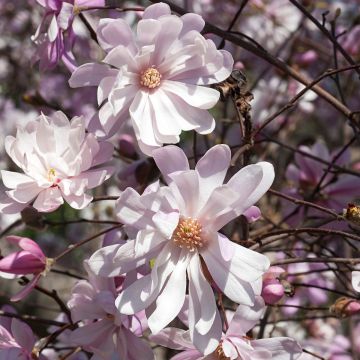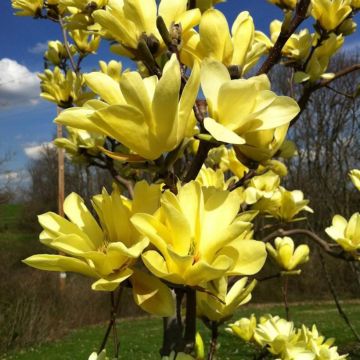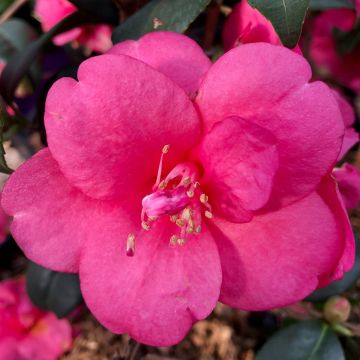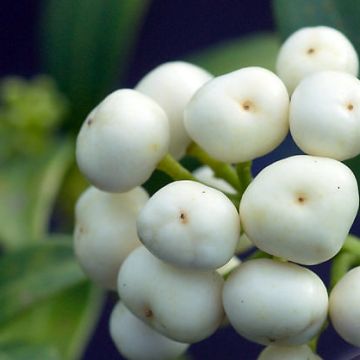

Magnolia soulangeana Cameo
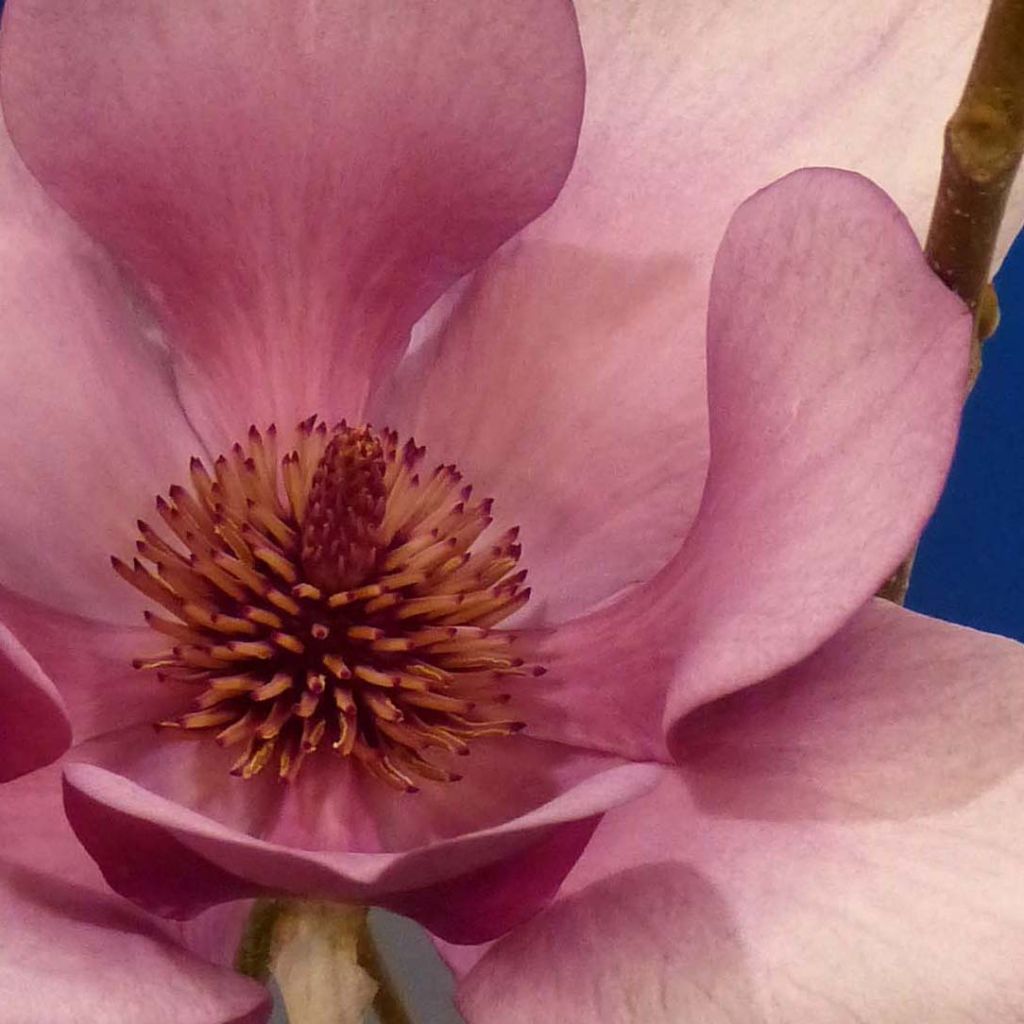

Magnolia soulangeana Cameo
Magnolia soulangeana Cameo
Magnolia x soulangeana Cameo
Magnolia
Has recovered well and has already produced 2 flowers in the first year.
Mickaël T., 29/05/2023
This item cannot be shipped to the selected country
Delivery charge from €5.90
Delivery to Corse prohibited
More information
Schedule delivery date,
and select date in basket
This plant carries a 24 months recovery warranty
More information
We guarantee the quality of our plants for a full growing cycle, and will replace at our expense any plant that fails to recover under normal climatic and planting conditions.
From €5.90 for pickup delivery and €6.90 for home delivery
Express home delivery from €8.90.
Delivery to Corse prohibited: UE law prohibits the import of this plant from mainland France to Corse as part of the fight against Xylella fastidiosa. Please accept our sincere apologies.
More information

Does this plant fit my garden?
Set up your Plantfit profile →
Description
Magnolia x soulangeana 'Cameo' is a brand new variety of Magnolia Soulangeana that is quite fabulous, and its flowering will be much anticipated every year. This amazing bush is remarkably floriferous from a young age, with unique flowering and a compact habit perfectly suited for small spaces. It is covered in late winter or early spring, before the foliage appears, with sculptural flowers, beautifully bicolored, with a warm purple-pink color on the outside and a white-pink color on the inside. This variety, destined for a bright future, is a true treasure for the garden or terrace!
The 'Cameo' Magnolia, recently obtained in the Netherlands, belongs to the magnolia family. It is derived from M. x soulangeana, a French horticultural creation from the 19th century that is still highly appreciated for its ease of cultivation and its floriferous nature. This upright small tree with a compact rounded shape, taller than it is wide, measures 3 to 4 meters (10 to 13 feet) in height at maturity and has a width of 1.5 meters (5 feet). Presenting a bushy habit with beautiful and well-balanced branches, it can also grow on a single trunk. Its deciduous foliage is made up of obovate leaves, dark green on the top side and paler and finely villous on the underside, turning yellow-brown in autumn, measuring 10 to 15 cm (4 to 6in) in length. From March to April, depending on the climate, numerous solitary, bicolored and slightly fragrant flowers appear, in the shape of cups or tulips, before and after the leaves emerge. They are uniquely arranged, with their petals overlapping like those of a rose. The harmony of colors between the purple-pink on the outside and the veined white-pink on the inside is remarkable. These erect flowers are formed of 8 tepals (undifferentiated sepals and petals) which are waxy and thick, opening slowly, with numerous pink-brown stamens. After flowering, brown fruits containing red seeds appear.
This 'Cameo' Magnolia, not very large but with remarkable flowering is perfect for small spaces, including the terrace when planted in a large container. It should be planted in a rich, moist, and well-drained soil that is low-alkaline to non-alkaline, in full sun or partial shade. Just make sure not to plant other plants within 1.5 meters (5 feet) of the Magnolia's trunk, as its roots do not tolerate competition. It is most often used as a solitary subject in the middle of a short grass meadow, alone or with ground cover plants at its base, where its remarkable flowering is most effective. It can be integrated into an ericaceous bed, in a Japanese-style setting. It is also possible to create beautiful flowering hedges along pathways, alternating this Magnolia with other cultivars. The Soulange Magnolia is one of the ornamental trees that best withstands atmospheric pollution.
Report an error about the product description
Magnolia soulangeana Cameo in pictures




Plant habit
Flowering
Foliage
Botanical data
Magnolia
x soulangeana
Cameo
Magnoliaceae
Magnolia
Cultivar or hybrid
Other Magnolia
Planting and care
The Magnolia x soulangeana 'Cameo' prefers sheltered locations, sunny to partially shaded exposures, a moist, well-drained, rich and humus-rich, deep, neutral to acidic soil. It tolerates clayey soils that are not waterlogged. However it does not tolerate limestone, poor and dry soils, or windy locations. With good hardiness (up to -20°C (1°F)), it is nevertheless essential to protect young subjects from frost in the first years following planting. Note that late frosts and cold winds can damage flower buds and young leaves, thus affecting flowering.
Planting Magnolia can be done in spring or autumn, outside of the frost period, ensuring it is placed in a sheltered spot away from cold winds. Prepare a hole 80 cm (32 in) wide and deep, with a good supply of ericaceous soil and compost. Handle it delicately when placing it in the hole, so as not to break the fleshy but fragile roots. Immediate watering with lime-free water (rainwater) helps to settle the soil around the roots. During the first year of planting, Magnolia requires watering once a week. It will appreciate an amendment once a year in spring. For planting in limestone soil, it is advisable to replace your soil with well-rotted compost, leafmould and ericaceous compost. For better recovery of your tree, do not choose plants that are too large (1.50 m (5 ft) is a good size). Staking may be necessary if the tree is a large specimen. Water generously in the first years after planting. Magnolia does not like prolonged drought, so the soil should remain slightly moist (but not waterlogged) throughout the summer. It is recommended to mulch around the base to keep it moist during the hot season, enrich the soil, and protect it from the cold in winter.
During the first years, pruning after flowering can be done to shape its silhouette. The growth of this tree is slow in the first years following planting. It will be well established after 4 to 5 years, its growth will accelerate, and pruning will no longer be necessary except to remove dead wood and rebalance its habit. As its roots are fragile, transplanting should be avoided. The only enemies of Magnolia are pests such as scale insects, snails, and slugs that attack young plants, and diseases such as root rot (in excessively waterlogged soil), coral disease, and Pestalozzia.
Planting period
Intended location
Care
-
, onOrder confirmed
Reply from on Promesse de fleurs
Spring-flowering shrubs
Haven't found what you were looking for?
Hardiness is the lowest winter temperature a plant can endure without suffering serious damage or even dying. However, hardiness is affected by location (a sheltered area, such as a patio), protection (winter cover) and soil type (hardiness is improved by well-drained soil).

Photo Sharing Terms & Conditions
In order to encourage gardeners to interact and share their experiences, Promesse de fleurs offers various media enabling content to be uploaded onto its Site - in particular via the ‘Photo sharing’ module.
The User agrees to refrain from:
- Posting any content that is illegal, prejudicial, insulting, racist, inciteful to hatred, revisionist, contrary to public decency, that infringes on privacy or on the privacy rights of third parties, in particular the publicity rights of persons and goods, intellectual property rights, or the right to privacy.
- Submitting content on behalf of a third party;
- Impersonate the identity of a third party and/or publish any personal information about a third party;
In general, the User undertakes to refrain from any unethical behaviour.
All Content (in particular text, comments, files, images, photos, videos, creative works, etc.), which may be subject to property or intellectual property rights, image or other private rights, shall remain the property of the User, subject to the limited rights granted by the terms of the licence granted by Promesse de fleurs as stated below. Users are at liberty to publish or not to publish such Content on the Site, notably via the ‘Photo Sharing’ facility, and accept that this Content shall be made public and freely accessible, notably on the Internet.
Users further acknowledge, undertake to have ,and guarantee that they hold all necessary rights and permissions to publish such material on the Site, in particular with regard to the legislation in force pertaining to any privacy, property, intellectual property, image, or contractual rights, or rights of any other nature. By publishing such Content on the Site, Users acknowledge accepting full liability as publishers of the Content within the meaning of the law, and grant Promesse de fleurs, free of charge, an inclusive, worldwide licence for the said Content for the entire duration of its publication, including all reproduction, representation, up/downloading, displaying, performing, transmission, and storage rights.
Users also grant permission for their name to be linked to the Content and accept that this link may not always be made available.
By engaging in posting material, Users consent to their Content becoming automatically accessible on the Internet, in particular on other sites and/or blogs and/or web pages of the Promesse de fleurs site, including in particular social pages and the Promesse de fleurs catalogue.
Users may secure the removal of entrusted content free of charge by issuing a simple request via our contact form.
The flowering period indicated on our website applies to countries and regions located in USDA zone 8 (France, the United Kingdom, Ireland, the Netherlands, etc.)
It will vary according to where you live:
- In zones 9 to 10 (Italy, Spain, Greece, etc.), flowering will occur about 2 to 4 weeks earlier.
- In zones 6 to 7 (Germany, Poland, Slovenia, and lower mountainous regions), flowering will be delayed by 2 to 3 weeks.
- In zone 5 (Central Europe, Scandinavia), blooming will be delayed by 3 to 5 weeks.
In temperate climates, pruning of spring-flowering shrubs (forsythia, spireas, etc.) should be done just after flowering.
Pruning of summer-flowering shrubs (Indian Lilac, Perovskia, etc.) can be done in winter or spring.
In cold regions as well as with frost-sensitive plants, avoid pruning too early when severe frosts may still occur.
The planting period indicated on our website applies to countries and regions located in USDA zone 8 (France, United Kingdom, Ireland, Netherlands).
It will vary according to where you live:
- In Mediterranean zones (Marseille, Madrid, Milan, etc.), autumn and winter are the best planting periods.
- In continental zones (Strasbourg, Munich, Vienna, etc.), delay planting by 2 to 3 weeks in spring and bring it forward by 2 to 4 weeks in autumn.
- In mountainous regions (the Alps, Pyrenees, Carpathians, etc.), it is best to plant in late spring (May-June) or late summer (August-September).
The harvesting period indicated on our website applies to countries and regions in USDA zone 8 (France, England, Ireland, the Netherlands).
In colder areas (Scandinavia, Poland, Austria...) fruit and vegetable harvests are likely to be delayed by 3-4 weeks.
In warmer areas (Italy, Spain, Greece, etc.), harvesting will probably take place earlier, depending on weather conditions.
The sowing periods indicated on our website apply to countries and regions within USDA Zone 8 (France, UK, Ireland, Netherlands).
In colder areas (Scandinavia, Poland, Austria...), delay any outdoor sowing by 3-4 weeks, or sow under glass.
In warmer climes (Italy, Spain, Greece, etc.), bring outdoor sowing forward by a few weeks.




































